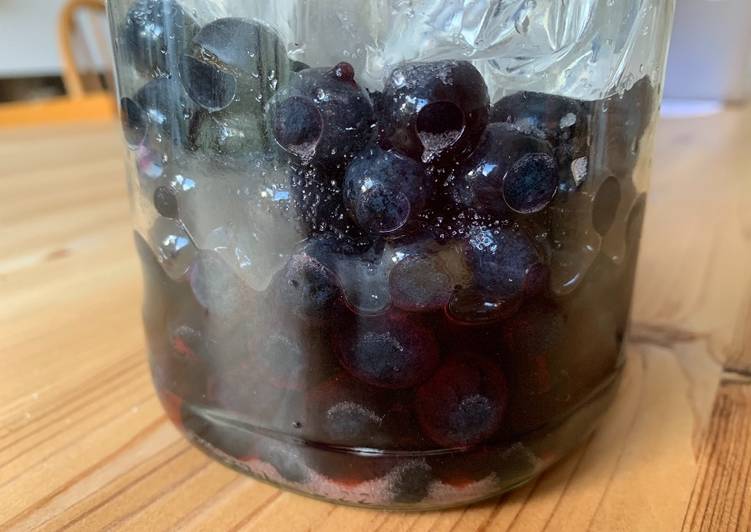Sloe-boshi (a sacreligious seasonal version of umeboshi). _My mother came for a visit this week, bringing along a pot of her homemade umeboshi. I asked her to tell me how she makes them; not only did she write it down for me, she even had pictures she'd taken of her attempts in the past couple of years! Umeboshi are pickled (brined) ume fruits common in Japan.
 The practice of seasonal preserving such as Ume Shigoto is integral to all Japanese tables — ranging from gorgeous kaiseki meals, zen shojin, to humble home meals.
Yumé Boshi stands in line with this tradition.
How To Make Umeboshi-Japanese Salt Plums
You can have Sloe-boshi (a sacreligious seasonal version of umeboshi) using 2 ingredients and 5 steps. Here is how you cook it.
The practice of seasonal preserving such as Ume Shigoto is integral to all Japanese tables — ranging from gorgeous kaiseki meals, zen shojin, to humble home meals.
Yumé Boshi stands in line with this tradition.
How To Make Umeboshi-Japanese Salt Plums
You can have Sloe-boshi (a sacreligious seasonal version of umeboshi) using 2 ingredients and 5 steps. Here is how you cook it.
Ingredients of Sloe-boshi (a sacreligious seasonal version of umeboshi)
- It's 300 g of sloes.
- You need 30 g of salt.
Umeboshi from Apricots Umeboshi often translated into English as Japanese Salt Plums. First off - SLOEs (Standardized Letters of Evaluation) are extremely important. Ask anyone who has gone through the application process, and they'll tell you that SLOEs will make or break your application. Frugality led me to it: A vegetarian roll made with salty plum paste and grassy shiso leaves was a very pleasant way to keep my bill in check.
Sloe-boshi (a sacreligious seasonal version of umeboshi) instructions
- Gather up your ingredients. You'll need 10% of the weight of your sloes in salt. You'll also need a jar to ferment them in, and a sandwich bag to act as a weight..
- Rinse your sloes.
- Mix the sloes and salt.
- Pack them into the jar, then add the sandwich bag on top. Fill it a bit with water to act as a weight..
- Now wait. Over the next few days, the liquid will start to leach out of the sloes and mix with the salt to create a brine, which will cover the tops of the sloes. The sloes will ferment in the brine, and after 10 days should be done. Give one a try. Once they're done, drain of the liquid (keep it), and dehydrate the sloes. I'll add steps once I have got this far!.
Though the common translation for "ume" is "plum," in fact the tiny, tart fruit is more closely related to an apricot. Pickled, the fruits are called umeboshi. Explore the Boshi collection - the favourite images chosen by Eduardo-A-Amazonas on DeviantArt. Highly salted pickled plums, or umeboshi, have been a beloved part of the Japanese diet for centuries, prized for their preservative qualities and health However, proponents are fighting back, arguing that the combination of health benefits and unique flavor make the humble umeboshi the ideal superfood. We went back to teach a cooking class at Plant to Plate in Richmond last week‼️ The students learned how to make miso soup from scratch and temari sushi (aka "casual sushi").